In a lot of ways, technological innovation shaped the world as we know it. The biggest revolution in humankind’s history began when the electricity became widely available and reached its climax with the advent of wireless connections. Thanks to the breakthroughs made during that period, everyday life turned easier than we would’ve believed possible back then. However, we paid a hefty price for that comfort. The EMF protection also became necessary to protect ourselves from the dangers of electromagnetic radiation.
However, most individuals are oblivious about the invisible forces threatening their families’ safety. They ignore how dangerous living near high-voltage power lines and cell towers can be, and never put down their smartphones. That’s something we’d like to change before it’s too late. To educate rather than criticize, we’ll answer the most common questions people have regarding EMF radiation and EMF protection.
An Introduction to EMF
Before discussing possible defensive measures against EMF radiation, a few things need clarification. The facts that you need to know beforehand are:
What is EMF or Electromagnetic Field
EMF stands for electromagnetic field, a force that radiates from both natural and artificial sources. These sources are abundant because electromagnetic fields are a byproduct of electrical charges. When there is an electric charge, there’s an electric field around it, even if the device is turned off. When said energy starts flowing, magnetic fields are created. Electric and magnetic fields can be treated as individual forces, although they get more intertwined as their strength increases.
These forces are invisible but easily measurable, and we take advantage of them in many ways. However, some concerns about public health arose due to the increasing EMF exposure we face daily.
As technology steadily takes over the world, artificial sources of EMF radiation also proliferate around us. For that reason, researchers around the world have tackled this issue, but a conclusive answer hasn’t been found yet. However, an important amount of studies lead to unsettling discoveries that we’ll discuss thoroughly in a while.
The Electromagnetic Spectrum
Electromagnetic radiation is a common phenomenon in the universe, but not all electromagnetic radiation types are alike. Depending on their amount of energy, frequency, and wave length, they can be classified as follows:
- Radio waves
- Microwaves
- Infrared radiation
- Visible light
- Ultraviolet radiation
- X-ray radiation
- Gamma-ray radiation

In this scheme, radio waves have the longest wavelength and lowest frequency, and gamma-ray radiation the shortest and highest. However, they’re not clearly defined, but rather blend into each other as their properties change. At one point, nearing the UV region, the radiation becomes ionizing, meaning that it can tear apart electrons from atoms. Nonetheless, below that threshold, electromagnetic radiation still interacts with matter and energy in meaningful ways.
Similarly, different types of EMF radiation travel through space differently. With shorter wavelengths, the radiation has a higher capacity to penetrate through physical objects. On the other hand, a lower frequency can reach further distances but has a lower penetration rate.
Where Does It Come From
Its sources can be either man-made or naturally-occurring, like the electromagnetic field that surrounds our whole planet. In the same way, Earth’s EMF is produced by energy flowing deep within its core, artificial sources come from electricity. The most common unnatural EMF sources in your home are:
- Electric wiring
- Your cellphone
- Wireless devices
- Wi-Fi routers
- Kitchen appliances
- Computers, monitors and TVs
- Cell towers in your area
Similarly, you can find many of these EMF radiation sources in your workplace. However, most industrial facilities have significantly larger amounts of electromagnetic radiation. Bigger machines usually require more energy, which translates to bigger and stronger electromagnetic fields. Industrial furnaces, welding equipment, power generators, and the like produce enough to interfere with defibrillators and pacemakers.
You might have noticed that we only listed man-made EMF sources. That’s because studies revealed that those are the ones you should be concerned about. Why? Let’s see.
Natural or Artificially-Generated
As we stated before, we’re exposed to plenty of natural sources of electromagnetic radiation. Light itself belongs to the electromagnetic spectrum but doesn’t represent such a threat to your health. Why would a man-generated electromagnetic field be different? The most likely answer is polarization.
Artificially-generated electromagnetic radiation is polarized, while a natural one isn’t. Roughly explained, this means that photons constituting electromagnetic radiation behave differently in each case. In natural kinds of electromagnetic radiation, these photons are “wild”. Each one acts almost like an individual entity, within unspecific oscillation planes and presenting random phase differences among them.
Contrarily, the photons in man-made EMF are “synchronized”. And these homogeneous photons have an easier time interacting with biological tissue. They can force electrically charged molecules within and around the cells to behave like the photons surrounding it. In that sense, they have more potential to make changes in your body than natural ones.
How to Measure EMF Exposure
As an invisible force, electromagnetic radiation requires technical equipment to be measured. Some electric companies make on-site readings of the electromagnetic radiation created by electric systems upon request. However, scheduling an appointment can be a hassle, and they might charge a fee for this service.
The devices used to precisely calculate a field’s strength are called EMF meters. Using them, you can locate radiation hotspots within your home or workplace. With that information, you can estimate an exposure rate knowing the amount of time you’ve been exposed to those fields.
Without fancy equipment, having a reliable reading of your average exposure to EMF is hard, to say the least. However, if you live near a cell tower or a high-voltage electric line, your exposure is likely higher than average. Similarly, working in an industrial setting usually implies alarming exposure rates. But knowing the precise amount of exposure to EMF radiation becomes more difficult as the amount of sources increases.
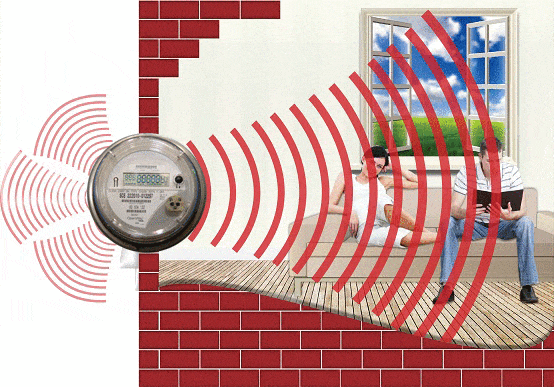
What Is an EMF Meter
EMF meters are similar to antennas but are employed to gauge an electromagnetic field’s flux density or its changes over time. Typically, they’re used for scientific purposes, mostly due to their elevated costs. Regardless, they’re the most reliable way to have a precise reading of electromagnetic radiation in a determined area.
There are two main kinds of EMF meters, single-axis, and triple-axis measuring devices. The former is the most practical alternative for household use. Triple-axis EMF meters, on the other hand, are more accurate and produce a reading faster. However, they’re significantly more expensive than single-axis EMF meters.
The vast majority of measuring devices are calibrated to work within the 50Hz and 60Hz alternating fields. Since those frequencies are the standard for power grids in Europe and the US, their operation is quite simple. Thanks to that, even untrained individuals can estimate their EMF exposure using an EMF meter.
What Level of EMF Is Dangerous
Unfortunately, there isn’t a conclusive answer regarding the amount of electromagnetic radiation that could be harmful to human beings. According to studies, depending on the kind of radiation and exposure rate, some of the most worrisome consequences could be:
- Higher risk of developing certain types of cancer
- Poor immune response due to hemodynamic imbalance
- Hormonal changes, being melatonin the most affected
- Neurological conditions and mental health issues
- Unpredictable changes in the blood-brain barrier
- A significant decrease in fertility or complete sterility
- DNA damage caused by oxidative stress
Although the lower-end of the electromagnetic spectrum isn’t as harmful as direct X-ray exposure, our exposure rates are exponentially superior. Moreover, both the World Health Organization and the NIEHS labeled even the mildest forms of electromagnetic radiation as “possibly carcinogenic”. And, as time passes by, the accumulative effects of a lifetime of EMF exposure could prove to be extremely dangerous.
What Are the Symptoms of EMF Exposure
Since most cases of overexposure to EMF are misdiagnosed or downright overlooked, comprehensive lists of symptoms are hard to find. Although there’s a consensus about its capacity to cause tumors and cell damage, there’s an ongoing debate regarding other signs. So far, we’ve been able to associate the following symptoms with cases of EMF overexposure:
- Insomnia or poor sleeping
- Poor memory and headaches
- Mild or moderate anxiety
- Dizziness and fatigue
- Problems to concentrate
- Tingling skin and dysesthesia
- Appetite loss and nausea
- Depression
Unfortunately, these symptoms coincide with those of many other medical conditions, which complicates making a diagnosis. Even more, many of them could potentially cause the others, like in depression and appetite loss’ cases. If you experience any of the above-mentioned symptoms, use EMF protection to rule out EMF overexposure first. However, if the situation doesn’t improve, then a visit to your doctor might be in order.
Is EMF Protection Necessary?
Naturally created electromagnetic fields don’t pose a threat to human health. Our bodies can handle certain amounts of radiation, and humans didn’t need EMF protection a few decades ago. Regrettably, the overwhelming increase of electromagnetic radiation during the modern era changed that.
As we became more technologically advanced, we created bigger and stronger electromagnetic fields almost everywhere. In big cities, you’ll be hard-pressed to find places that aren’t exposed to any degree of artificial EMF radiation. As of today, the only way to have a dependable EMF safety zone is to make it yourself.
Given that EMF radiation has been linked with many health-related issues, the lack of protection could have dire consequences. In this day and age, you are bound to be inside many electromagnetic fields in your everyday life. Thankfully, having EMF protection can easily keep the radiation from reaching dangerous levels.

Who Needs It the Most
EMF protection would be ideally implemented on all individuals because radiation can affect anyone. However, EMF radiation poses a bigger threat to some segments of the human population. These groups are:
- Children and toddlers more significantly
- Patients suffering from cancer
- People with any kind of immunodeficiency
- Individuals recovering from illness
- Elderly population and pregnant women
In each of these groups, the likeliness of adverse health effects appearing is higher than it is for everyone else. In children, epidemiological evidence has linked exposure to EMF to an increase in leukemia cases.
Similarly, some studies have theorized the possibility of EMF radiation making cancer patients more prone to metastasis. For the rest, the symptoms of EMF exposure could potentially take a harder toll on their system than average. Also, since EMF can worsen depression, it’s advisable to protect individuals with suicidal tendencies or other mental health issues.
EMF Safety Essentials
If, like us, you’re worried about the negative effects of EMF exposure, you’ll probably want some solutions. To ease your concerns, we have put together this EMF safety guide:
What is EMF Protection
As its name implies, EMF protection refers to any precaution taken to keep electromagnetic radiation at bay. If you’re wondering “how can I protect myself from EMF?“, there are plenty of ways to go about it. From adjustments to your daily routine and protection devices to natural EMF blockers, the choice is up to you.
Many shielding techniques are at your disposal if you’re serious about cutting down harmful EMF radiation. There are garments to wear, scenarios to avoid, things you should be doing, and many more.
Each legitimate alternative has its ups and downs, but all of them are effective to some degree. However, the market is also flooded with dishonest vendors that will try to rip you off. Scams are very common due to the invisible nature of electromagnetic radiation. The best way to stay away from such devious offers is by educating yourself about how and why things work. Or don’t.
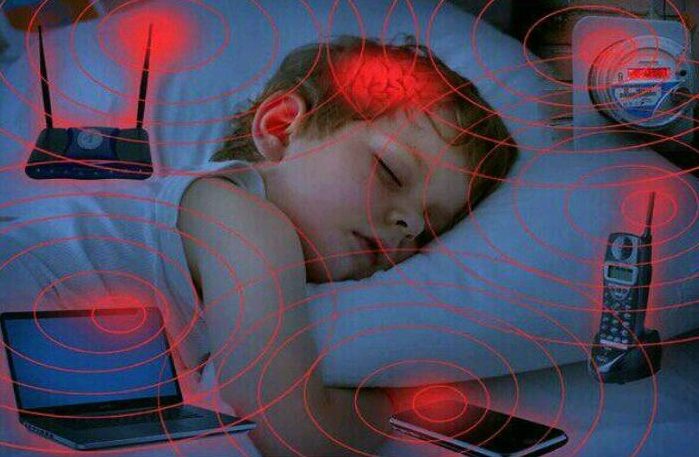
How Does it Work?
Electromagnetic shielding is a well-documented topic due to its many practical applications. Cellphones, for instance, have a shield in place to protect the inner circuits from the antenna’s electromagnetic field. Moreover, sometimes researchers need rooms devoid of any kind of electromagnetic influence for an experiment. The same fundamentals could be applied to a huge number of scenarios if you know your way around it.
In the same manner, simply making a few changes to your daily routine can have a significant impact on your exposure rate. Mainly, there are two ways to go about it, namely:
Blocking EMF Radiation
By far the most effective way to reduce your daily EMF exposure is to block the incoming radiation. To accomplish that, there are a great number of alternatives available. Among them, the most noteworthy are:
- Protective clothing
- Paramagnetic keystones
- EMF Shields
- Anti-EMF paint
- Faraday fabric
- EMF blockers
These protective measures are found in varied presentations, with different characteristics and results. As you would expect, some are more expensive than others too. Thankfully, all of them are very practical and many serve a handful of purposes, like Faraday fabric.
Building your home’s EMF protection from scratch might look like an investment, but it’s the most reliable solution. If you can’t live without the wonders of technology, it might be the only solution as well.
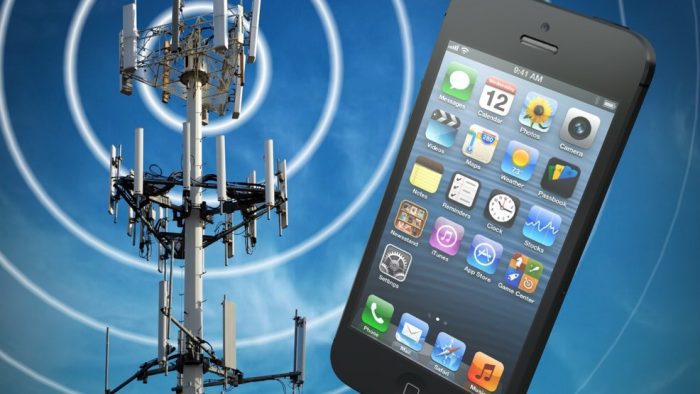
Avoiding EMF Radiation
If you aren’t entirely committed to building an integral defensive scheme, you can still reduce some of your radiation intake. Keeping a healthy distance from the main sources of EMF radiation in your life pays off in the long run. These sources might be:
- Your cellphone
- Monitors and TVs
- Portable computers
- Wi-Fi connections
- Microwave ovens
Using an EMF meter, you can also locate radiation hotspots in your house to know where to stay away from. The greater the distance between you and these hotspots, the lesser their influence on your body. Likewise, keeping your devices turned off most of the time keeps the radiation to a minimal level. However, it’s unlikely that you’ll be able to stay away from power lines and cell towers indefinitely.
What’s the Best Way to Do It
When it comes to EMF protection, long distances, and objects between yourself and the sources are key. If such objects also give you some degree of isolation from electromagnetic waves, even better.
Electromagnetic radiation loses power exponentially as you step further away from the emitting entity. For this motive, being extra careful with the devices you constantly keep close to your body is mandatory. Perhaps the most dangerous gadget in this regard is your smartphone. Phone sleeves, shielding cases, or similar solutions are a must-have for anyone looking for the simplest EMF protection.
In physical barriers, there are a few things to consider about their dependability. The materials they’re made of play a huge role in their capacity to reduce electromagnetic radiation. The basics are:
Using Conductive Materials
The most common approach to EMF protection relies on the use of conductive materials to absorb or suppress radiation. Faraday cages are a great example of this kind of defense against electromagnetic fields. When grounded conductors interact with electromagnetic fields, the field’s electric current stops, and nothing goes through. The most readily available of these materials are:
- Nickel
- Copper
- Brass
- Steel
- Zinc
These are often mixed with other materials to fit specific purposes, such as creating coatings and cases. Silver is another great conductor that deals with EMF radiation quite efficiently, but its price is rather restrictive. Coverage area and layer thickness are the most pressing matters when you’re using conductive materials, so you need affordable alternatives.
Using Magnetic Materials
Another approach is the employment of metallic compounds with magnetic or paramagnetic properties. These materials are harder to come across and are usually reserved to safeguard sensitive electronic boards. Contrary to conductive materials, these don’t stop the magnetic fields but rather absorb them. However, their capacity is limited, because at one point the materials get saturated.
Besides, naturalist healing advisors also point out that similar magnetic properties are present in many minerals. Some crystals are diamagnetic or paramagnetic and could somehow disturb electromagnetic fields if worn close to the body.
EMF Safety Solutions
On the practical side of things, there are many paths you can take to improve your EMF protection. Each of them represents a possible solution, or at least a part of it. Most people employ a combination of these methods to ensure their well-being:
EMF Protection Products
A protective product is any man-made item capable of reducing your radiation exposure to some degree. In the broadest sense, it includes all artifacts meant to either block or absorb electromagnetic radiation. Among them, the most popular alternatives are:
EMF Shields
EMF shield is a generic term that covers a wide assortment of protective devices. It’s a physical barrier with electromagnetic properties that either absorbs or blocks the radiation. Usually, they’re meant to cover high-radiation devices to disable their harmful properties. They come in many shapes and sizes, such as cell phone cases, laptop sleeves, and anti-radiation stickers.
In most cases, they don’t provide any degree of wide-area protection. They’re limited to a single radiation point, focusing on the most critical areas of your household. There are shields to cover monitors, microwave ovens, routers, and many, many more. Their main advantages are:
Optimal Performance
An EMF shield is going to serve a particular purpose. Whether it is a Faraday canopy or a shielded phone case, it should be able to withstand the necessary radiation. Its shape also has to be the most adequate to cover the most critical areas of the device.
While this isn’t always the case, all of the best EMF shields fit the bill. Nonetheless, most shields are effective to some degree, and there are a couple of surprisingly good alternatives available. In any case, they’re better suited to shield you from various dangerous devices than their generic counterparts.
Affordable Protection
Perhaps the most attractive feature of custom EMF shields is their relatively low price compared to other alternatives. Targeting a single radiation hotspot such as a router is more cost-efficient than isolating a whole room. The pieces themselves aren’t outrageously overpriced, and they serve their purpose well enough. It’s a small investment that might be more beneficial than you would expect initially.
However, their limited capacity is a concerning matter when dealing with more powerful electromagnetic fields. An EMF shield shouldn’t be taken as an integral solution, but rather as part of a bigger protection system.
Practical Solutions
Another bonus of the EMF shields is the convenient size. They’re, undoubtedly, the most space-efficient solution in most circumstances. Commonly, their design is as unobtrusive as their capacity requirements allow them to be. They’re all about being inconspicuous and staying out of your way as much as they can.
Using a shielded laptop mat is simpler than making your whole desktop impervious to radiation, for example. Similarly, shielding your phone is more practical than keeping it in a Faraday bag. In general terms, using an EMF shield is the most straightforward answer when you can’t compromise too much space for the sake of protection.
EMF Clothing
These garments are made using metallic fibers mixed within the clothes’ fabric. The materials can range from steel, nickel, or copper to titanium and silver, usually paired with a softer textile compound. Thanks to the conductive properties of these elements, most radiation is stopped before being absorbed by your body. However, due to the density of such materials, EMF protective clothing sometimes feels a bit heavy.

The good news is that there’s plenty to choose from when it comes to this kind of attire. There are many stylish choices on the market, with trendier models coming out all the time. Similarly, you’ll also find many discrete alternatives to wear under your regular clothes. You don’t have to dress poorly to be thoroughly protected if you’re afraid of that.
Thorough Protection
Being covered, for the most part, with a sort of electromagnetic shield is a huge advantage to reduce harmful radiation. This is the kind of protection that you can take anywhere you go, which deals with ambient electromagnetic forces effectively. In your workplace, shopping at the mall, or walking your dog, it doesn’t matter. You’ll have some degree of protection against radio waves, electrosmog, and the like.
Many of these also have special pockets to keep your most sensitive gadgets inside. Such pockets have stronger protection, to further reduce the radiation intake.
Security and Comfort
Though it might seem surprising, shielded clothing isn’t nearly as uncomfortable as the name implies. The metallic fibers that lend their conductive properties to the garment aren’t stiff nor rough in any sense. Furthermore, the clothes are also made with additional materials like cotton, polyester, silk, and a few others. The final product is hardly distinguishable from a regular piece of clothing.
The only sense in which these feel slightly off is their weight. However, it doesn’t get to the point of being a problem either, because they aren’t too heavy. Just barely so, in the same way, a thick shirt can be sometimes.
Aesthetic Appeal
The use of metallic fibers in clothing dates back to ancient history. Traditionally, kings, nobility, and leaders of all kinds wore garments decorated with threads of precious metals. In a similar fashion, these shielded pieces of clothing have an uncommon stylistic value that goes beyond their utilitarian conception.
The textile compounds that these items are made with have a distinct texture and appearance. Unlike anything else available in the market, their particular characteristics are ideal for classy individuals. If you’re always concerned about giving the right impression, you will find that these are, for the most part, appropriate.
EMF Fabric
EMF fabric or Faraday fabric is a broad term that encompasses all textile compounds with shielding properties. Although the name also applies for the one used to make EMF clothing, its most common form is significantly thicker. However, it maintains a great malleability and has greater conductive properties.
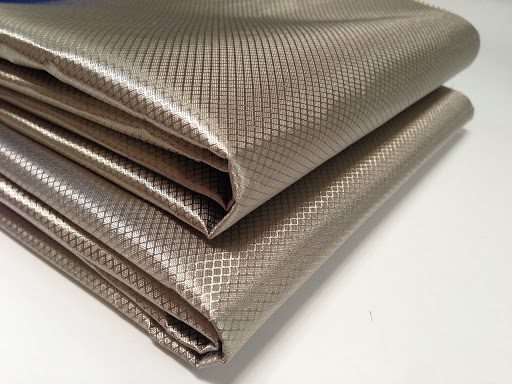
These fabrics are made with different fiber thickness and varied conductive materials. Thicker fabrics are heavier and tougher but can handle more radiation. Lighter fabrics, on the other hand, are more versatile, pretty much like regular sheets of fabric. Between the two of them, the thicker textiles typically are the most expensive ones. This fabric is among your greatest allies against EMF for many reasons, among them:
Great Conductor
The materials used to manufacture these fabrics have great conductive properties to ensure great protection. Nickel, copper, brass, and aluminum are maybe the most notorious among them. These are transformed into thin strands of metal and then interwoven with other materials to create a smooth protective layer.
Their performance might differ depending on the presentation and brand, but their general effectiveness is very high in most cases. It’s particularly good for higher-frequency devices up to the 5Ghz band, like routers and cellphones, and anything below those frequencies.
Surprisingly Handy
Being a sort of raw material, EMF fabric is something that you can shape however you see fit. You can make a set of curtains, or covers for your kitchen appliances, or just use it between your blankets. You could even keep your credit cards inside a folded piece of EMF fabric to prevent theft.
With some help from a tailor, you could also make a handmade Faraday bag, and the list goes on. The possibilities are nearly endless, and that’s something we appreciate when EMF’s sources are everywhere.
Multiple Presentations
There’s a fair amount of different EMF fabrics on the market. Depending on the task at hand, you’ll likely find the most fitting alternative for your purposes. Whether you’re looking for a particular softness or permeability, you’re bound to find something appropriate.
This also means that you need to ensure that the textile compounds you’re considering, meet your requirements. Although thicker alternatives have impressive numbers, you also need to consider flexibility and weight. It’s easy to get carried away by higher protection rates that ultimately lead to very impractical results.
EMF Paint
Last but in no way least, we have EMF paint. Among the most common protective measures against EMF radiation, this is the most effective for household use. Using paint as a vehicle, you can easily spread an isolating barrier on any surface whenever you please. Unfortunately, it’s also one of the most expensive approaches for EMF shielding.
Nevertheless, it’s also the best approach to stop high-frequency signals. Overall, EMF paint could be considered the most reliable method to reduce EMF exposure from cell towers and electric wiring. Additionally, this kind of paint can also help you with the electromagnetic fields generated within your home. Among the biggest benefits you’ll reap from this course of action are:
Ultimate Protection
The electromagnetic permeability of EMF paint offers stronger protection than any other alternative available. Furthermore, the opportunity to enhance this protection with each subsequent layer of paint is likewise very valuable. This is the kind of coverage you need in critical areas of the house, like bedrooms and living rooms.
Many alternatives can block electromagnetic fields up to 15Ghz, which is quite impressive by any standards. However, the amount of paint necessary to add more than a couple of layers of paint is considerable. The pricing might be slightly restrictive, but you’ll be hard-pressed to find anything better for the job.

Supreme Versatility
Another area where these protective paints excel is their remarkable versatility. You get to decide how much paint is going to be used and where it needs to be. This allows you to focus on isolating big radiation hotspots like the kitchen or near the routers. Likewise, you can also use it to create your very own EMF safety zone.
Besides having your protection in thin layers over the walls, this is also the least obtrusive kind of EMF protection. What is more, you can also paint over the protective layer with regular paint to blend in more easily.
Long-term Results
EMF paint stands above other EMF protection alternatives due to its surprising durability. Although there are some rare exceptions to that rule, most brands guarantee your protection for years to come. When they aren’t directly exposed to harsh environmental conditions, these protective layers can easily endure half a decade of wear and tear. In many cases, they can last indefinitely under the right conditions.
In addition, their capacity to block radiation from higher frequencies makes them the most reliable EMF blockers for 5G towers. And, as innovations develop even further, this higher capacity makes them a sound investment for the future of EMF protection.
Read more 5G related posts in our 5G category.
Alternative Approaches
Dealing with dangerous electromagnetic forces can also be tackled from other perspectives. Natural and holistic approaches have also been proposed to counteract electromagnetic fields and their influence. The most wholesome solutions in that regard are:
Passive Natural Shielding
This approach has the benefit of being seemingly effortless. Keeping certain minerals, crystals and other significant elements with their own electromagnetic properties around allegedly protect you from surrounding fields. Although it may seem like a bold claim, the theory behind it has some merit to it. The materials commonly associated with anti-radiation prowess are:
- Shungite
- Tourmaline
- Fluorite
- Lepidolite
Orgonite stones and bracelets are very popular as well. The full list of suitable alternatives is rather long, although their effectiveness is dubious in several cases. Nonetheless, they can at least provide a natural influence in your household’s electromagnetic flux. And when they’re worn close to your chest or ears, moderate amounts of radiation can be rendered harmless.
Proactive Palliative Care
If you can’t protect yourself from electromagnetic fields, then you have to take it in a stride. You will face all sorts of invisible yet potentially dangerous forces unprotected. What are you going to do? You are going to be prepared.
The radiation can try to mess with your body, but nothing is keeping you from fighting back. Counterbalancing the effects of EMF mostly boils down to:
- Using special dietary supplements
- Having an antioxidant-rich diet
- Avoiding known radiation sources
- Taking care of your mental health
- Doing exercise regularly
Magnesium supplements in particular are often recommended for people with electromagnetic hypersensitivity. In the same way, adding spices like rosemary, turmeric, cloves, and cinnamon can lessen the chances of an unfortunate conclusion.
Frequently Asked Questions
Does Aluminum Foil Block EMF?
Due to its conductive properties, aluminum foil works to some extent as an electromagnetic shield. However, having a thin layer of aluminum acting as an isolating element only works to some extent. With stronger electromagnetic fields, sheets of aluminum foil quickly become less effective. Regardless, given that aluminum is such a great conductor, its shielding capacity is remarkable for such a conventional item.
Do Anti-Radiation Phone Cases Work?
In most cases, manufacturers test their shields before they make any claims regarding anti-radioactive properties. However, this isn’t always the case, as many of them are often disingenuously advertised for the sake of increasing sales. Despite these particular cases, anti-radiation phone cases are among the most reliable kinds of EMF protection.
How Do I Know If EMF and Wi-Fi Protection Devices Work?
The simplest way to ensure that any device is protecting you from electromagnetic influences is to check with an EMF meter. However, there is another telling sign of an EMF blocker working properly. Usually, the signal in wireless devices drops within most EMF protected areas. However, aside from that particular scenario, testing your protections without a specialized measuring device is a very difficult task.
Are Smart Meters Dangerous?
Smart meters are meant to collect data from both gas and electric meters. This data is going to be collected wirelessly, which implies the presence of additional electromagnetic fields in your neighborhood. The radio waves will possibly reach inside your home, although their penetration rates are fairly low. How much they threaten your safety will depend on your distance from the radiation source. We wrote an in-depth article about this topic, check it: Smart Meter Dangers
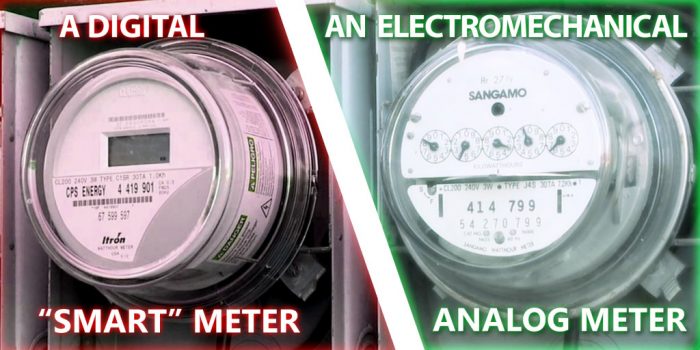
Final Thoughts
The electromagnetic era’s fallout is upon us, which makes having EMF protection a necessity. For most of us, completely giving up on our cherished electronic devices is something we can’t afford. Thankfully, coexisting with such powerful forces is possible as long as the proper precautions are in place. For that purpose, different kinds of EMF protection can be employed to avoid any radiation-related issues.
As new technological innovations arrive, the need for this kind of protection might become even more pressing. Being proactive now could potentially save you a few headaches in the long run, both literally and figuratively. Fortunately, many defensive choices are up to the task at hand. In the end, it all boils down to finding the most fitting solution for your particular needs.
